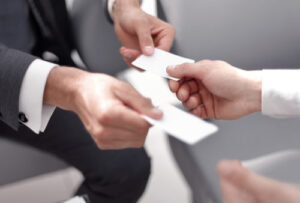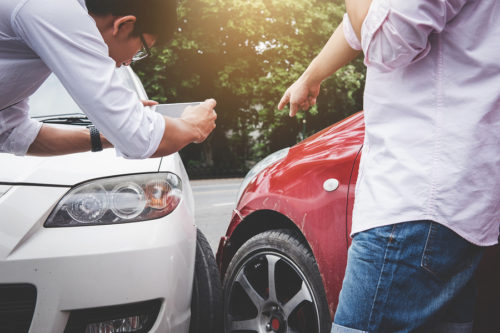Eight Steps You Will Want to Take, and Four Mistakes to Avoid
You do your best to drive safely: following the rules of the road, using a safe speed in undesirable weather conditions, and avoiding distractions while behind the wheel. Unfortunately, you cannot control what other drivers do behind the wheel; and in spite of your best efforts, you may struggle to avoid an accident, especially if a driver behaves unpredictably.
When the unfamiliar crunch of metal sounds in your ears and you find your vehicle catapulted out of control due to another driver’s mistake, you need to react carefully. The actions you take as early as the scene of the accident can help determine the ultimate outcome of your car accident claim. Keep these steps in your mind following a car accident that isn’t your fault.
For more information about auto accident law in the state of Kentucky contact the Flora Templeton Stuart today and talk to a Kentucky car accident lawyer about your case.
Step One: Call 911
Following a serious accident, you need to summon both an ambulance and the police. If a vehicle catches on fire, you may also need fire trucks at the scene of the accident. Call 911 immediately after your accident. This one call will bring in the emergency help you need following your accident. Remain at the scene of the accident until the police arrive unless you must leave to acquire needed medical care.
Step Two: Prioritize Medical Care
Following any type of car accident, including pedestrian accidents, motorcycle accidents, and bicycle accidents, you must prioritize seeking medical attention. If you cannot move safely around the accident scene due to broken bones or bleeding, stay put and wait for an ambulance to arrive. If you do feel able to move around the accident scene, make sure to carefully consider the force behind the accident and the potential extent of your injuries: if you have spinal cord damage, for example, you may make your condition worse as you move around the scene.
No matter how minor you consider your injuries in the moment, remember that symptoms of many injuries may not show up immediately after the accident. You may, for example, find that adrenaline obscures the pain from broken bones or soft tissue damage. If you lost consciousness at the scene, even if you otherwise feel fine, you may have a traumatic brain injury and should seek treatment from a medical professional to increase your odds of making a full recovery.
Step Three: Get the Other Driver’s Information
At the scene of the accident, you can start collecting vital information that will help you later file a personal injury claim to help cover your medical bills, your lost time at work, and any damage to your personal property, including your vehicle. Collect the other driver’s name and insurance information. You may want to snap a picture of his license and insurance card with your phone to make it easier to look back at that information later. Snapping a picture will also help you keep all of the information about your accident in one place, on your phone, instead of spreading it around.
Step Four: Snap a Few Photos
Take a look at the accident scene. In many cases, you may see things that will help provide evidence about your claim later. Snapping a picture will ensure that you have access to that evidence. You may want to take pictures of:
- Damage to your vehicle. Take a look at where the other car hit you as well as any other impact damage: getting pushed into a guard rail, for example, can cause substantial damage to both you and your vehicle.
- Damage to the other party’s vehicle.
- The positions of the two vehicles before you move your cars.
- The other driver’s license plate.
- The other driver.
- Your injuries at the time of the accident, especially bruising, cuts, or highly visible damage.
Step Five: Get Witness Information
Do you see witnesses to your accident? If the other party tries to deny responsibility for the accident, you may need to prove what happened during the accident. Witnesses can provide clear statements about what they saw during the accident. To provide those statements, however, witnesses must know that you need them. Get names and phone numbers or email addresses for any people who observed the scene of the accident. Keep in mind that if you do need witness statements, you will get much more reliable statements if you collect them immediately after the accident. The longer you wait to get witness statements, the more those memories will change. Even witnesses who feel they can give a fully accurate statement, memories may change with time.

Step Six: Keep Track of All Your Medical Information
If you suffer serious injuries in any kind of accident, your medical bills will start piling up fast. To seek the full compensation you deserve for your injuries, start by keeping track of all of your medical expenses and all of your paperwork, including:
Any reports or copies of scans delivered to you at the hospital. In the emergency room, you may undergo several scans and exams to help determine the full extent of your injuries. These scans can help show the extent of your injuries and how they have the potential to impact your life. You should also keep track of any recommendations that impact your day-to-day life.
Copies of your medical bills. The cost of your ambulance transport alone can equal as much as $1,200. Other medical bills may pile up even faster: the cost of treatment and scans in the emergency room, the cost of hospitalization, and the cost of any procedures you have while in the hospital. You may also have to pay for physical therapy or long-term care expenses if you need to stay in a care facility. Some accident victims need long-term care at home.
Copies of other expenses related to your injuries. You may face more than just medical expenses related to your injuries. Keep track of all the costs necessary to move forward with your life after your accident:
- Alterations to your home. You may, for example, need to install a wheelchair ramp or widen your doorways to make your home wheelchair accessible.
- Durable medical equipment. Some accident victims need to have devices to help them get around: wheelchairs, crutches, or braces. Others may need devices for their homes: shower chairs, hospital beds, lifts, and more.
- Alterations to your vehicle. You may need a new, wheelchair-friendly vehicle to make getting around after your accident easier.
Photos of your injury as you recover. Ideally, you should take photos of your injury at each stage of the recovery process. Do not remove medical devices like casts and bandages unless recommended by your doctor; however, if you do have those items removed or can see your wounds, you should take photos when you can. Those photos can provide valuable evidence of how your healing progresses, which may vary significantly from one person to the next.

Step Seven: Notify Your Insurance Company
You likely know that if you cause an accident, you need to notify your insurance company as soon as possible. Even if you did not cause your accident, however, you should notify your insurance company about the accident. Your insurance company can provide you with a wealth of valuable information about the claims process, including how long it may take for your claim to come through and how you may need to handle the claims process. If you totaled your vehicle in the accident, you may need to contact your insurance company to cancel the policy.
Step Eight: Contact a Personal Injury Attorney
After a traffic accident, you do not have to have an attorney to help you file a claim. You can work with your insurance company to file the claim on your own. Having an attorney on your side, however, can offer these important advantages:
- An attorney can help advise you through the process. If you have never filed a personal injury claim before, you might not know where to start: who to contact, who to work with, or how those individuals impact your claim. An attorney can also provide you with valuable advice about how to avoid minimizing the compensation you receive.
- An attorney can alleviate much of the stress of filing a personal injury claim. By turning negotiations over to your attorney, for example, you may find it easier to focus on other aspects of your recovery, rather than having to focus on all the details of the claim.
- An attorney can often increase the compensation you recover. Many insurance companies will attempt to decrease the compensation you receive, alleviating their financial responsibility following the accident. An attorney will have a better idea of how much compensation you should expect and how each element of your claim impacts the compensation you should receive. Remember, an insurer is going to be looking out for their bottom line; it’s wise to have an advocate to look out for yours.
What Not to Do After a Car Accident
Following a car accident, you may be tempted to consider some of these actions. If you want to protect yourself both physically and financially, however, avoid making these key mistakes.
Mistake #1: Claiming Responsibility for the Accident.
Some people instinctively accept someone else’s apology with, “Oh, no, I shouldn’t have…” While this might help solve an argument with a friend or family member, it can result in disaster at the scene of an accident. Instead, accept the other driver’s apology without making statements that could incriminate you later; leave the determination of fault to the experts.
Mistake #2: Leaving the Scene of the Accident.
After an accident, even if you did not cause the accident, you must remain at the scene until the police arrive to take a statement, unless:
- You need to leave to seek immediate medical treatment for your injuries
- You must transport someone else to seek medical attention
- You feel unsafe at the scene of the accident (the other driver raging, for example)
- You need to leave to call the police
Even if you did not cause the accident, you may face charges if you leave the scene of the accident. Stick around until the police arrive. Staying at the scene of the accident will also ensure that the police hear your side of the story and that your name is on the police report, which could help you later.
Mistake #3: Skipping the Trip to the Hospital or Urgent Care.
In some cases, people can walk away from accidents, even severe car accidents, completely unscathed. Those cases, however, do not guarantee that you did not suffer serious injury in your accident. Some victims skip the trip for medical attention, only to discover later that they have more serious injuries than initially realized. Failing to seek medical attention after the accident can cause complications:
- Inability to successfully file a personal injury claim for your injuries, since the other party’s insurance company may argue that you sustained your injuries at another time.
- Worsening injuries, since walking around with serious injuries can exacerbate them.
- Lack of diagnosis for serious injuries, which can cause you to wind up with serious complications down the road: bones healed improperly, for example.
Mistake #4: Trying to Handle Your Car Accident Claim on Your Own.
Legally, you can file a personal injury claim without having to work with a car accident lawyer. You can work with the other party’s insurance company directly, rather than having to go through a lawyer. This can, however, cause complications as you try to handle your claim. In some cases, insurance companies offer higher settlements when they know you have an attorney on your side. An attorney can also help decrease your stress throughout the claims process. Attempting to handle your claim on your own can leave you frustrated and struggling to get the funds you deserve, while turning to a personal injury attorney can help you move more smoothly through the process.
If you suffered injuries in a car accident, do not wait–call our offices at (888) 782-9090 to setup a free case evaluation with our team. An experienced car accident attorney can help you begin seeking the compensation you need for your injuries.

